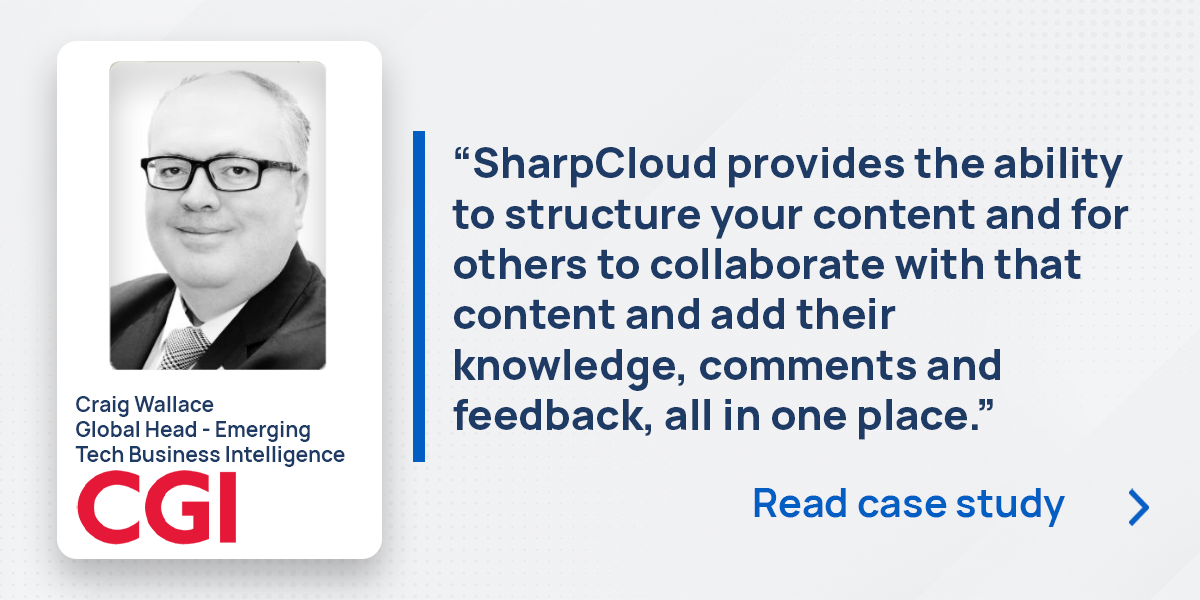Forbes says, “There is no universal or one-size-fits-all prescription for a winning business. But corporate leaders today seem to agree that strategic alignment is high on the list.”
What is strategic alignment?
- According to Wikipedia, "strategic alignment is a process that ensures an organization's structure, use of resources, and culture, support its strategy."
- Another definition: Strategic alignment is the process of aligning an organization’s decisions and actions such that they support the achievement of strategic goals.
Why does strategic alignment matter?
Strategic alignment is one of the key differences between organizations that perform well and those that don’t. High-performing organizations are often the most aligned, engaged, prepared, and change-ready.
Aligning business units and employees with the organization's strategy is not a one-time deal but an ongoing process that requires constant leadership, communication, and monitoring.
91% of organizations have a strategy to become more agile and digital in the way they operate their business, yet only 25% of organizations realize the value they were expecting - CGI
How to achieve strategic alignment
The approach to strategy, operating model and systems change has pivoted from a predict and plan approach to a continuous and joined up approach of sensing and
responding. Business agility across all three dimensions has now become a critical capability to providing competitive advantage.
-
Align and unite your leadership team
A leader needs to be able to think both conceptually with a bird’s-eye view across the whole organization, and practically with the ability to make progress a reality.
Lack of strategic alignment often starts at the top and can negatively impact leaders at all levels getting “on board", particularly in larger siloed organizations where individual business groups have their own agendas, often working toward their self-interest rather than toward company-wide strategic priorities.
Culture is significantly influenced by the leadership so this means management needs a comprehensive plan for managing the expectations of the business, easing resistance to change, encouraging motivation, and promoting the skills and behaviour required for agile.
-
Develop and communicate your strategy
The fundamental purpose of strategic planning is to align a company’s mission with its vision - the strategic plan is the roadmap that helps you navigate from one to another. Effective communication lies at the heart of strategic alignment. It pretty much goes without saying, that staff members can only implement a new strategy successfully if they are able to understand it and accept it.
With many teams working remotely, it's harder for executives to engage with each other, and deliver a cohesive strategic vision for achieving long-term business goals, so enabling better collaboration is crucial.
The digitally enhanced and richly connected world we live in today creates new challenges and opportunities for designing effective collaboration and communication for this way of working.
-
Inspire commitment
Employee participation is one of the most effective ways to create strategic alignment. Employees should be involved both in strategy development and in decisions on how to implement the strategy in practice.
The best collaboration tools allow you to share your work easily but also securely, and encourage co-creation among team members, suggestions, and real-time feedback. No matter where you’re working, everyone in the business can strategically plan and strive towards a single destination, ensuring 'buy-in'.
Individual performance goals should always be linked to the strategic goals of the organization. This way, employees are encouraged to constantly make a personal contribution to the achievement of corporate goals.
-
Don't set and forget
Inevitably things change along the way. You can and should revisit your strategic plan to make sure key initiatives and goals remain valid, and if any strategy or tactic opposes your organization’s values, then it should be reconsidered.
Regular evaluation reduces the implementation risk and make it easier to stop non-profitable projects before they incur huge losses. The flexibility to revise and re-prioritize projects at an early stage is essential. Dashboards reflect the current performance status at a glance, and, therefore, are very suitable for making quick tactical decisions.
-
See the big picture
Silo thinking is one of the greatest stumbling blocks for strategic alignment. Free flow of real-time information both horizontally between teams and departments and vertically from top management all the way to front line employees and vice versa is key. Outdated spreadsheets, documents and slide decks, and constant searching for the latest information will only limit alignment between departments.
Information on changes in the external business environment that could affect the organization's strategy needs to be passed on quickly too. Strategy software can help to facilitate efficient communication within the organization.
Agile delivery approaches have introduced new ways to visualize work progress,
providing teams and decision makers with new insights, encouraging transparency
and collaboration and ultimately, alignment.
Sense and respond approach
Connecting the dots and improving alignment increases the probability of realizing shared value and becoming a sustainable business. Creating an agile process that can adapt quickly to continuous change while optimizing their operations, is key to achieving balance. Balance is continual, and it is achieved by always taking a holistic approach to enterprise decisions - across their value chain.
Strategic alignment benefits
f done correctly, strategic alignment is a business investment that can positively influence organizational alignment; improving efficiency, effectiveness, and profitability.
- Align goals, teams and data to get a complete view of the business – use your big picture to identify risks and opportunities.
- Empower and align your teams with increased visibility of priorities and accountability for delivery.
- Spend less time on rework – create and connect data sets and information once, use it over and over again.
- Escape from slide decks and complex spreadsheet discussions.
- Stop searching for information – standards for capturing information ensures trust, dynamic data means everyone is on the same page.
- Make better data-driven decisions with increased visibility and understanding of implications.
- Improve alignment through joint decision-making based on accurate information.
- Get instant visibility across all areas of the business with real-time customizable dashboards and reports.


